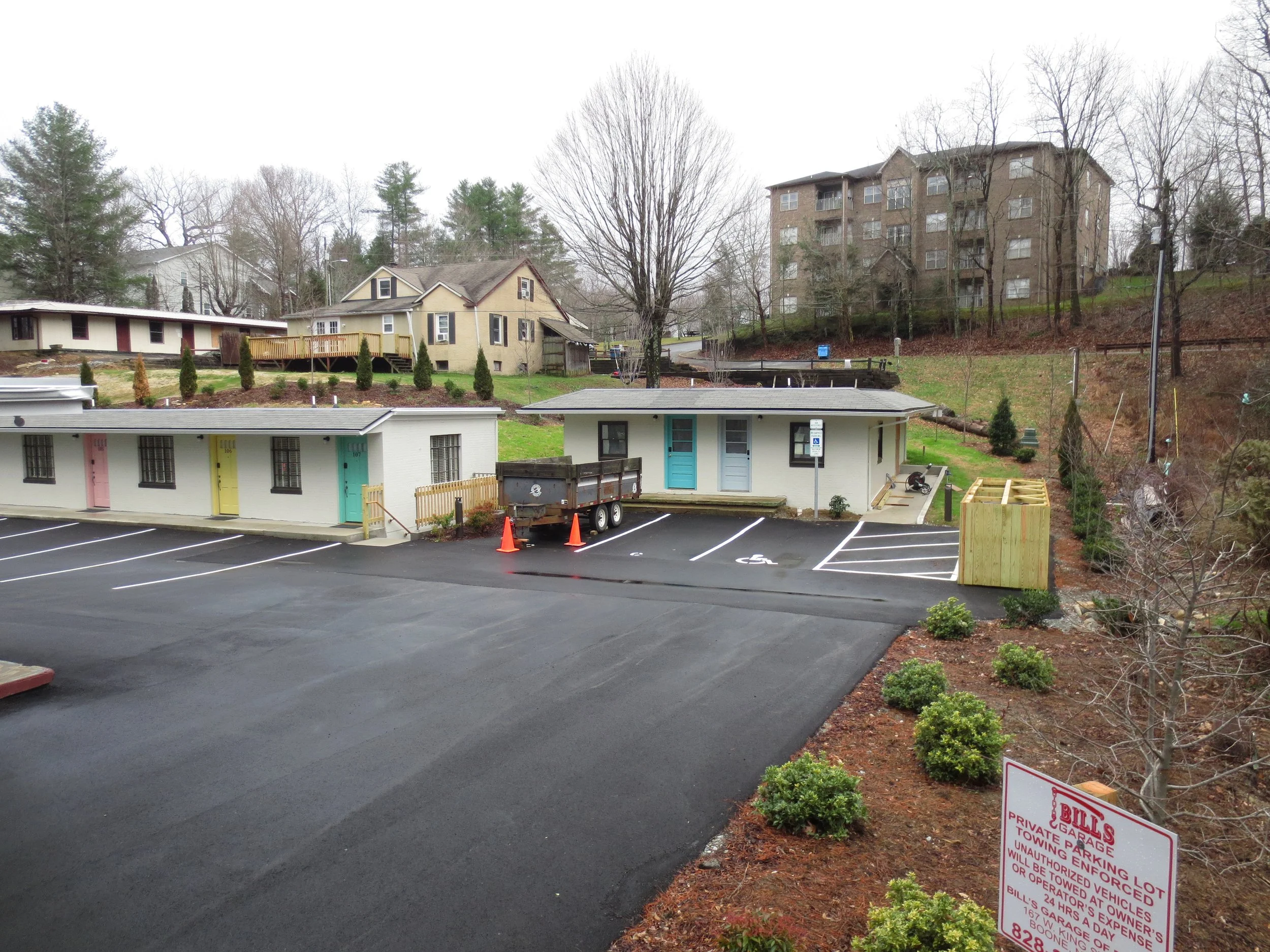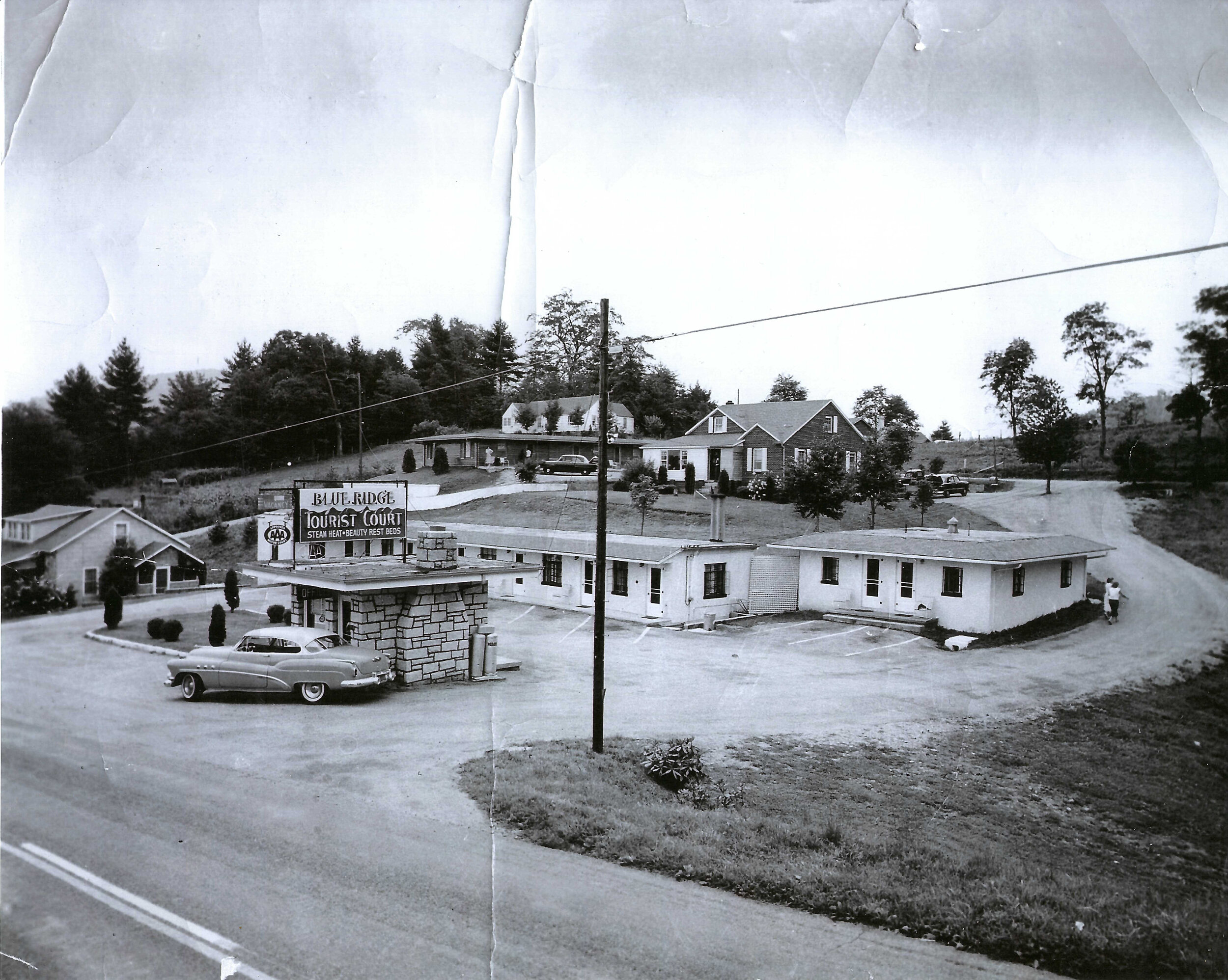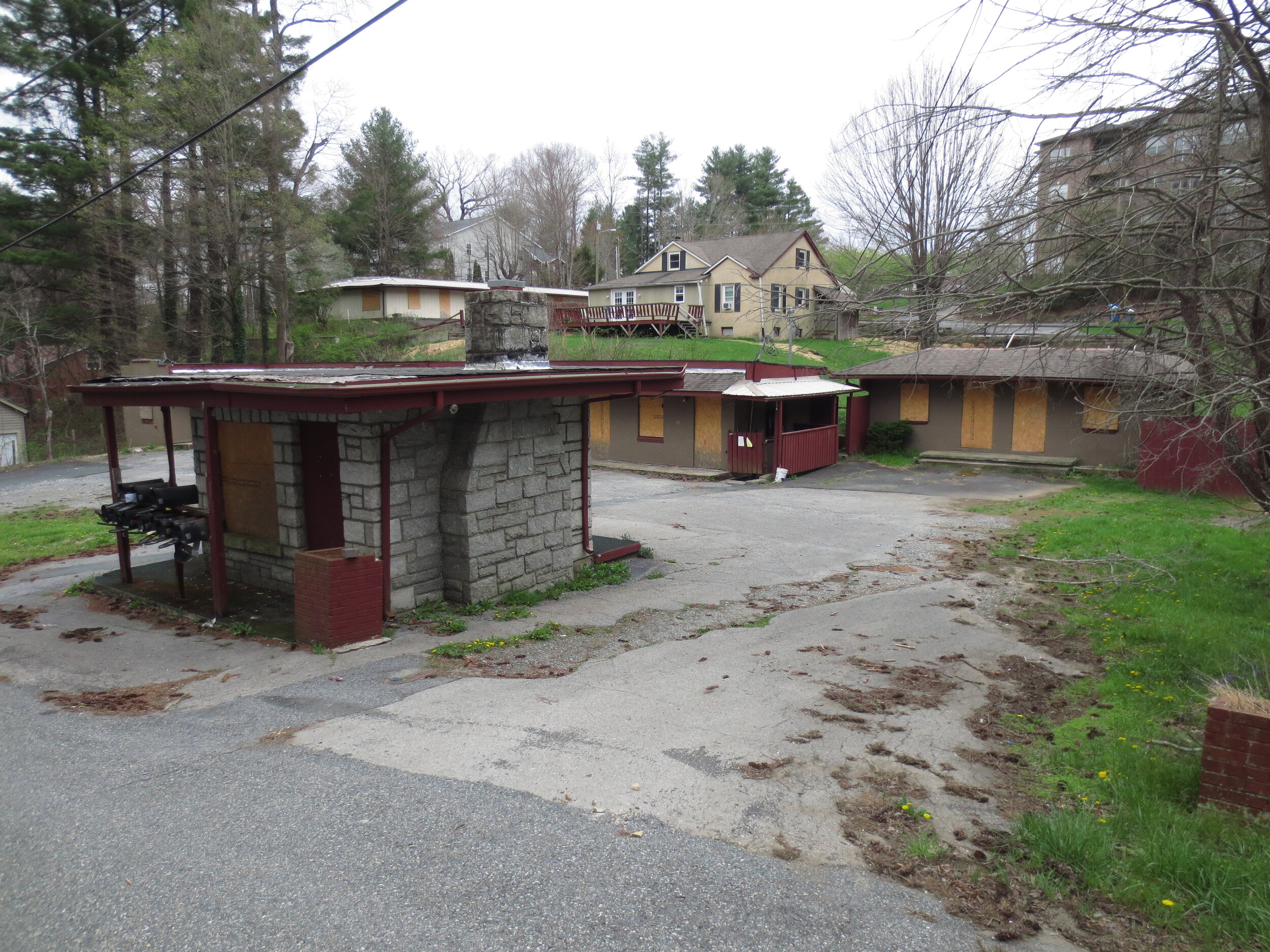Blue Ridge Tourist Court, Boone, NC
The Blue Ridge Tourist Court is significant at the local level under Criterion A in the area of entertainment/recreation for its association with mid-century tourism and roadside lodging in Boone and Watauga County at the beginning of the region’s transformation into a tourist hub. The period of significance is 1950 to 1970, representing the core period of the property’s use as a true roadside tourist court and motel under management first by the Wagner family (1950-1956), then by the Rice family (1956-1970).
The Blue Ridge Tourist Court is also significant at the local level under Criterion B for its association with Estel G. Wagner, a mid-century developer and real estate magnate who is believed to have been Boone’s first real estate broker and who played a major role in the development of Boone’s mid-century tourism trade. Wagner built the L-shaped Blue Ridge Tourist Court building and the native stone Office building in 1950, then added the Annex/Duplex in 1951, the Garage Apartment in either late 1951 or early 1952, and the Motel building in late 1953 or early 1954. Wagner held the property until its sale in 1956. Wagner played a highly significant role in the development of Boone’s mid-twentieth century tourism trade, serving in leadership roles with the Rotary Club and Boone Chamber of Commerce shortly after his arrival in Boone in 1949. His efforts as a member of the building committee for the Daniel Boone Amphitheatre (where Horn in the West continues to be staged) and his marketing of the Blue Ridge Tourist Court as the gathering spot for such diverse events as tourism photographer tours and the North Carolina Writers Conference only underscore his vision for linking roadside accommodations to the act of tourism itself. Wagner was also a visionary in land development, producing two mid-twentieth century Boone subdivisions, and played a major role well into the 1970s as a financial partner in other tourism attractions such as the Boone Golf Club and the Polar Palace. He also constructed several 1950s infill properties in downtown Boone and was one of the partners behind the Cabana Motel, a popular 1960s accommodation on Blowing Rock Road. The Blue Ridge Tourist Court is the earliest and most obvious surviving representation of Estel G. Wagner’s powerful influence on Boone’s tourism trade during the mid-twentieth century.
Five resources at the Blue Ridge Tourist Court—the Tourist Court building, the Office, the Annex, the Garage Apartment, and the Motel—were designated as a Local Historic Landmark by the Town of Boone on August 19, 2021. The entire complex, including the residence, is also under consideration for listing in the National Register of Historic Places by the North Carolina State Historic Preservation Office (December 2021).
The Blue Ridge Tourist Court was listed in the National Register of Historic Places on April 18, 2023.





